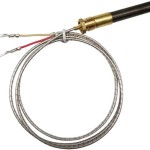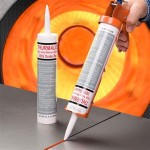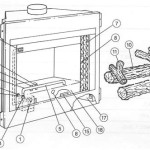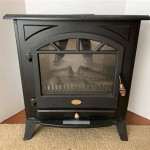Heat Glo Gas Fireplace Troubleshooting: A Comprehensive Guide
Heat Glo gas fireplaces offer a convenient and aesthetically pleasing alternative to traditional wood-burning fireplaces. However, like any mechanical device, they can experience operational issues. This article provides a comprehensive guide to troubleshooting common problems encountered with Heat Glo gas fireplaces, offering insights into possible causes and potential solutions. It is imperative to always consult the manufacturer's manual before attempting any repairs and to seek professional assistance when dealing with gas-related issues.
Prior to commencing any troubleshooting, ensure that the main gas supply to the fireplace is turned off. This crucial safety measure prevents gas leaks and potential hazards. Visually inspect the fireplace for any obvious damage, such as cracks in the glass, disconnected wires, or signs of soot buildup. These preliminary checks can often reveal the source of the problem without requiring advanced diagnostic procedures.
Pilot Light Issues: Ignition Failure and Extinguishment
One of the most frequent issues encountered with gas fireplaces is difficulty with the pilot light. The pilot light is a small, continuous flame that ignites the main burner. If the pilot light fails to ignite or repeatedly extinguishes, the fireplace will not operate correctly. Several factors can contribute to these problems.
A clogged pilot orifice is a common culprit. Dust, debris, and spiders can obstruct the small opening in the pilot assembly, preventing a sufficient flow of gas to sustain the flame. To address this, carefully clean the pilot orifice using a thin wire or needle. Exercise caution to avoid enlarging the orifice or damaging the assembly. After cleaning, attempt to relight the pilot light according to the manufacturer's instructions.
A faulty thermocouple or thermopile can also prevent the pilot light from staying lit. The thermocouple/thermopile is a safety device that senses the heat from the pilot flame. If the flame is present, it generates a small electrical current that keeps the gas valve open. If the thermocouple/thermopile is damaged or malfunctioning, it will not generate sufficient current, causing the gas valve to close and extinguish the pilot light. A multimeter can be used to test the output voltage of the thermocouple/thermopile. If the voltage is below the manufacturer's specified range, the component should be replaced.
A draft affecting the pilot flame is another potential cause. Strong air currents can blow out the pilot light, particularly in areas with high wind exposure or poorly sealed fireplace openings. Ensure the fireplace door or screen is properly closed and sealed. Consider installing a draft diverter or adjusting the fireplace's vent system to minimize the impact of external drafts.
Main Burner Problems: Ignition Failure and Incomplete Combustion
If the pilot light is functioning correctly but the main burner fails to ignite, or if the burner ignites but exhibits incomplete combustion, the issue likely lies with the main burner assembly or the gas valve. These problems can lead to inefficient heating, carbon monoxide production, and potential safety hazards.
A faulty gas valve is a common cause of main burner ignition failure. The gas valve controls the flow of gas to the main burner. If the valve is malfunctioning, it may not open properly, preventing gas from reaching the burner. The valve can be tested using a multimeter to check for proper voltage readings. If the voltage is correct but the burner is not igniting, the valve may be mechanically defective and require replacement. Note that gas valve replacement should only be performed by a qualified technician.
Clogged burner ports can also impede main burner operation. Debris, dust, and carbon deposits can accumulate in the small openings of the burner, restricting gas flow and leading to incomplete combustion. Carefully clean the burner ports using a wire brush or compressed air. Ensure all ports are clear and unobstructed. After cleaning, inspect the flame pattern to ensure proper burning and combustion.
Incorrect gas pressure can also cause burner problems. If the gas pressure is too low, the burner may produce a weak or unstable flame. If the pressure is too high, the burner may produce a yellow, sooty flame, indicating incomplete combustion. A manometer can be used to measure the gas pressure at the fireplace. Adjustments to the gas pressure should only be performed by a qualified technician, ensuring that the pressure is within the manufacturer's specified range.
Ventilation Issues: Blockages and Restrictions
Proper ventilation is critical for safe and efficient operation of a gas fireplace. The vent system removes combustion byproducts, such as carbon monoxide, from the home. Blockages or restrictions in the vent system can lead to a buildup of dangerous gases and reduce the fireplace's heating efficiency.
Check the vent system for any obstructions. Birds' nests, leaves, and other debris can accumulate in the vent pipe, blocking the flow of exhaust gases. Regularly inspect the vent termination point outside the home and remove any obstructions. Ensure the vent cap is properly installed and functioning correctly. If the vent system is excessively long or has too many bends, it may not provide adequate draft. Consult the manufacturer's specifications for the recommended vent system configuration.
Soot buildup within the vent system can also restrict airflow. Soot can accumulate due to incomplete combustion, improper gas pressure, or insufficient ventilation. A professional chimney sweep can clean the vent system and remove any soot deposits. Regular chimney inspections and cleanings are recommended to prevent soot buildup and ensure safe operation of the fireplace.
Furthermore, ensure that there are no leaks in the vent system. Leaks can allow combustion byproducts to escape into the home. Visually inspect the vent pipe connections for any signs of damage or corrosion. Seal any leaks with high-temperature sealant. A carbon monoxide detector should be installed in the vicinity of the fireplace to provide an early warning of any gas leaks.
Addressing these issues, from pilot light malfunctions to main burner problems and ventilation concerns, requires a systematic approach. Individuals are advised to consult the Heat Glo gas fireplace's user manual for specific instructions and safety guidelines. If uncertainties persist or if the problems are complex, seeking assistance from a certified gas fireplace technician is highly recommended. The technician possesses the necessary expertise and tools to diagnose and repair the fireplace safely and effectively, safeguarding both the fireplace's performance and the occupants' well-being.

Heat Glo Gas Fireplace Troubleshooting

Heat Glo Gas Fireplace Troubleshooting

Heat Glo Gas Fireplace Operation

Using Your Heat Glo Gas Fireplace During A Power Outage

Heat Glo Gas Fireplace Operation

Heat Glo Fireplaces Troubleshooting Gas Log Fires Melbourne

Heat Glo Fireplace Turns On And Off Here S What To Do Upgradedhome Com

Heat N Glo Ipi Burner Will Not Light Part 2

Why Your Gas Fireplace Won T Light And How To Fix It

Heat Glo Fireplace Turns On And Off Here S What To Do Upgradedhome Com








